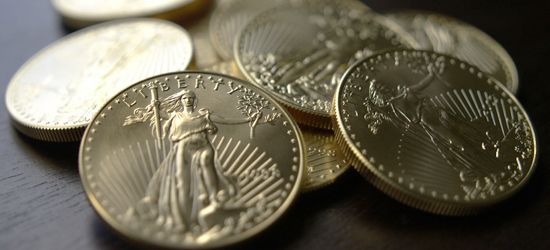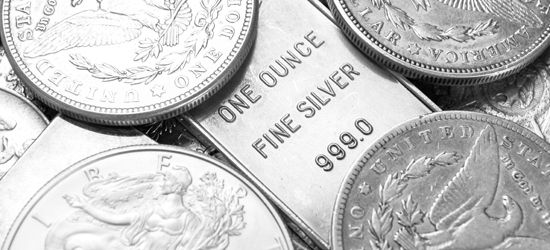Sell Your Coins
We Buy All Gold and Silver Coins
At Sell Your Gold we buy all types of coins such as bullion coins, proof coins, numismatic coins, and commemorative coins - this includes all precious metals types such as gold and silver coins. Our process is safe, simple and fast. To get started, all you need to do is request a free appraisal kit.
Lock in your price today! Call us to get a quote for the gold and silver coins you would like to sell. The quote will be noted on your account and our offer will be based on that day's gold price.
Types of Coins We Buy
As a customer of Sell Your Gold you can sell coins online using our secure and insured FedEx shipping. We accept all precious metal coins including but not limited to bullion, numismatic and commemorative coins.
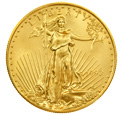 Domestic Coins
Domestic Coins
- Gold American Eagles
- Gold American Buffalo
- Pre-1933 US Gold Coins
- Platinum American Eagles
- Silver Dimes & Quarters
- Silver Half Dollars
- Liberty Gold Coins
- Gold Commemorative Coins
- American Silver Eagles
- Silver Eisenhower Dollars
- Morgan Silver Dollars
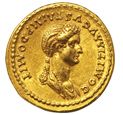 Foreign Coins
Foreign Coins
- Gold Maple Leaves
- Silver Maple Leaves
- Gold S.A. Krugerrands
- Platinum Maple Leaves
- Gold Austrian Philharmonics
- Gold Chinese Pandas
- Silver Chinese Pandas
- Gold Australian Kangaroos
- Silver Australian Koalas
- Gold British Britannia
- Gold Belgium Francs
FREE Appraisal Kit
A bullion coin is a coin purchased for investment, not circulation. Bullion coins are available in various weights and their precious metal content value will often exceed the face value of the coin. The U.S. Mint produces two type of bullion coins: Uncirculated and Proof Coins.

Uncirculated Coins:
Uncirculated coins are coins that have yet to enter the commerce stream. All coins start out this way after they are minted, but some coins will remain uncirculated. To be an authentic uncirculated coin it must be certified. It can only be certified if has its original sheen/luster - which it won't if it has been in circulation. There also must be no signs of wear on the coin. If an uncirculated coin does show any signs of wear it may have physically contacted other coins at mint or when the coins were transported from the mint. Don't fear: experts will be able to tell the difference between these marks and marks from circulation. Sell your gold and silver coins today! Call to get a quote.
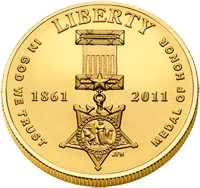
Proof Coins:
Proof coins are also uncirculated coins. They are rare and can often be expensive. These coins are made only for the collector's market or purchased for display purposes. In mint, proof coins are struck twice to bring out the full details of the coin design. The back of a proof coin is usually mirror-like. They are considered the finest quality of coin produced by the U.S. Mint.: hand-polished and packaged to preserve its brilliant finish. Sell your gold and silver coins today! Call to get a quote.

Numismatic Coins:
While a numismatic coin can be considered a bullion coin, investors who purchase numismatic coins often pay a pretty penny, as their value can be many times the value of the actual precious metal content. Numismatic coins are essentially rare or valuable coins that have external value. They can be more valuable because of their historical significance, they can be one of a kind, have special marks or be minted in an abnormal way, and therefore collectible items. Sell your gold and silver coins today! Call to get a quote.
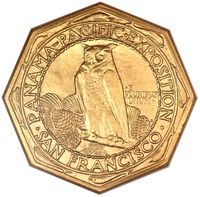
Commemorative Coins:
Another coin not intended for general circulation. These coins are U.S. Mint products created to commemorate important aspects in American history, and help raise money to preserve history, such a build new museums, maintain national monuments, preserve historical sites and support various Olympic programs. These coins are sought after since there is a limited quantity and they are only available for a limited amount of time. Sell your gold and silver coins today! Call to get a quote.
How Do You Know If Your Coin Is Authentic?
The more popular the coin, the more likely it is that there are counterfeits and replicas of it. It was once thought that coins under $100 were too much work and money to replicate; however, coin collectors are now finding that Asia and elsewhere are creating fakes of all coins and denominations. So how do you tell if your coin is real?
Replicas: Replica coins are usually reproductions of famous coins or historical events. You can often find them at souvenir shops, and marketing firms may distribute them as tchotchkes. An easy way to tell if your coin is a replica is by examining the seam that runs around the coin where the two halves of the casting mold come together: they also generally have less detail than a real coin. Unfortunately, replicas are virtually worthless, so before you make the investment, make sure you examine the piece carefully.
Counterfeits: Unlike replicas, counterfeits are put out into circulation to "trick" the public. Counterfeits are usually made of a worthless base metal, and can be easily detected if you know what to look for. Under close examination, counterfeit coins can have bubbles or pimples in the casting that can be seen under a magnifying glass. The engravings also won't match those of genuine mint. As coin collecting has gain more popularity, so have counterfeits. Forged gold coins are most commonly gold dollar and three-dollar gold pieces, or coins dated between 1870-1933. You may also find 1799 ten-dollar gold pieces, as well as 1811 five dollar coins. For silver, the most common forged coins are the 1084 Lafayette dollars, some commemorative half dollars, and the 1795 half dimes.
To confirm your coin isn't a counterfeit, compare your coins with others of the same kind. Confirm it's the same size, color, luster, weight, and has the same design details.
Alterations: Alterations to coins are usually done to deceive collectors. The coin may be altered by the addition, removal or change to the design of the coin, or the coin's finish could be altered by polishing, sandblasting, acid-etching, toning or plating of a genuine piece. The most common alterations are by changing mintmarks and dates.
To confirm your coin hasn't been altered, it's best to compare it to like coins under a 10x-40x magnifying glass as well as have an expert like, Sell Your Gold examine it for you.
Overall, coins that are rare or high in value should always come with a guarantee of authenticity done by a professional, and should be one of the first things you ask for before purchasing a coin.
Send your coin to Sell Your Gold today! We would be happy to examine and offer you a price. Not sure if it's authentic? As experienced coin buyers, we'll take care of that for you too! Click here to request a kit.
Grading and Authenticating Coins
Grading and authenticating coins is done to increase the buyer's and seller's comfort levels when
dealing with high value and rare coins in the market. These third-party grading companies provide a
service for a fee, but are impartial and independent from the buyer and seller within a transaction.
At Sell Your Gold we take all graded coins! Call us today at (888)
465-3860 to discuss the details
of the coins you are selling.
ANACS: The First Coin Grading Service
Grading services started back in the 1970's with the ANACS (American Numismatic Association Certification Service). The goal was to uphold and protect the integrity of the coin industry. The ANACS grader would examine a coin, determine its authenticity and give it a grade for each side of the coin. The coin would then be returned to the sender with a certificate and picture
PCGS and NGC: Today’s Leading Experts
In 1986, the Professional Coin Grading Service (PCGS), which also grades coins for a fee, started encapsulating the coins in plastic holders with its graded certificate. This is to ensure the graded certificate and the coin are never separated. A year later the NGC (Numismatic Guaranty Corporation of America) also started a similar service. These are now the top leading coin grading firms in the U.S.
Subjectivity: The Human Element
Much like the diamond world, coins are graded by humans - not computers - which can often be subjective depending on the professional grader. Coins that are graded, can have a low quality and a high quality within the same grade level. Characteristics such as luster, color, strength, and the strike of the coin can make one coin much more appealing than the other graded the same. Collectors look for this and like to cherry-pick by selecting the highest quality coin for a specific grade.
Gradefiation: Rising Standards
Over the years grading has also become stricter. Collectors have nicknamed this "gradeflation". Over time, the standards for a specific grade have risen and coin that was graded in the early 90's may now have a lower grade if it were graded today
Do you have an authentic coin your looking to sell? Click here to request your kit!
Common Coin Gradings - What Do They Mean
When a coin is given a grade, it will have an abbreviation such as "MS" for A Mint State coin as well as a numerical grade between 1 and 70. Mint State ("MS"), Uncirculated ("Unc.") and Brilliant Uncirculated ("BU") represent coins that have no wear i.e. uncirculated, but they can still have imperfections.
Mint State numerical grades range from MS-60 to MS-70. An MS-60 rated coin can have a poor strike, poor luster and discoloration. This is the lowest grade in uncirculated coins and actually tends to be an unusual grade. Uncirculated coins tend to grade from an MS-62 to a MS-64 which show moderate deficiencies with an above-average eye appeal. Modern bullion coins and commemorative coins are often found in the MS-69 range. Few will be rated an MS-70, meaning a flawless coin.
If you see coins that are marked with a "PR", that stands for Proof which is not actually a grade. Proof coins will also be graded, but include the PR with the actual grading i.e. MS/PR – 69. Circulated coins also have grades ranging from Poor to About Uncirculated with a numeric grade from 1-58.
| Condition | Grade Range | Characteristics |
|---|---|---|
| Poor | PO-1 | The coin is barely recognizable. The date is missing and the design has no raised edges. |
| Fair | FR-2 | Design outline and date may be visible enough to make out the type of coin, but the lettering and rim is worn and may be completely gone. |
| Almost Good | AG-3 | You should be able to make out more of the letter and the design. Rims of the coin will still be generally worn. |
| Good | G – 4 & G – 6 | You can make out the general design of the coin, but the details will be weak. The rim of the coin will be more prominent. |
| Very Good | VG – 8 & VG – 10 | Medium to heavy wear, but more details will be visible. Example - 3 or more letters of the word Liberty will be visible on the Liberty coin. |
| Fine | F -12 & F -15 | Medium wear. More details will be visible. Example - All 7 letters of the word Liberty will be visible on the Liberty coin. |
| Very Fine | VF – 20, 25, 30, 35 | Medium to light wear. Details will be more visible. Example - All 7 letters of the word Liberty will be visible and strong on the Liberty coin. |
| Extremely Fine | XF – 40 & XF – 45 | Light wear will be found on high parts of the coin. Could also show signs of the Mint luster. |
| About/Almost Uncirculated | AU – 50, 53, 55, 58 | Extremely light wear or light traces of friction only at the highest points. Can be mistaken as an Uncirculated coin. A AU – 58 coin could be considered a MS – 63 with a slight trace of wear. |
